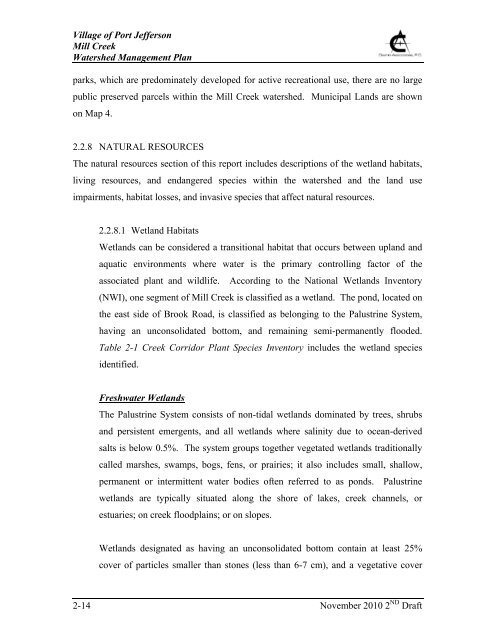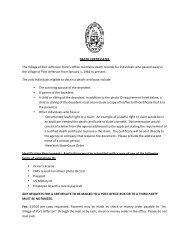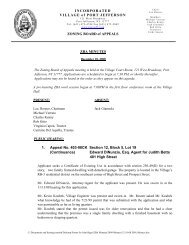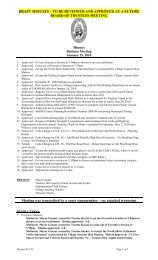Village of Port Jefferson Mill Creek Watershed Management Plan
Village of Port Jefferson Mill Creek Watershed Management Plan
Village of Port Jefferson Mill Creek Watershed Management Plan
Create successful ePaper yourself
Turn your PDF publications into a flip-book with our unique Google optimized e-Paper software.
<strong>Village</strong> <strong>of</strong> <strong>Port</strong> <strong>Jefferson</strong><br />
<strong>Mill</strong> <strong>Creek</strong><br />
<strong>Watershed</strong> <strong>Management</strong> <strong>Plan</strong><br />
parks, which are predominately developed for active recreational use, there are no large<br />
public preserved parcels within the <strong>Mill</strong> <strong>Creek</strong> watershed. Municipal Lands are shown<br />
on Map 4.<br />
2.2.8 NATURAL RESOURCES<br />
The natural resources section <strong>of</strong> this report includes descriptions <strong>of</strong> the wetland habitats,<br />
living resources, and endangered species within the watershed and the land use<br />
impairments, habitat losses, and invasive species that affect natural resources.<br />
2.2.8.1 Wetland Habitats<br />
Wetlands can be considered a transitional habitat that occurs between upland and<br />
aquatic environments where water is the primary controlling factor <strong>of</strong> the<br />
associated plant and wildlife. According to the National Wetlands Inventory<br />
(NWI), one segment <strong>of</strong> <strong>Mill</strong> <strong>Creek</strong> is classified as a wetland. The pond, located on<br />
the east side <strong>of</strong> Brook Road, is classified as belonging to the Palustrine System,<br />
having an unconsolidated bottom, and remaining semi-permanently flooded.<br />
Table 2-1 <strong>Creek</strong> Corridor <strong>Plan</strong>t Species Inventory includes the wetland species<br />
identified.<br />
Freshwater Wetlands<br />
The Palustrine System consists <strong>of</strong> non-tidal wetlands dominated by trees, shrubs<br />
and persistent emergents, and all wetlands where salinity due to ocean-derived<br />
salts is below 0.5%. The system groups together vegetated wetlands traditionally<br />
called marshes, swamps, bogs, fens, or prairies; it also includes small, shallow,<br />
permanent or intermittent water bodies <strong>of</strong>ten referred to as ponds. Palustrine<br />
wetlands are typically situated along the shore <strong>of</strong> lakes, creek channels, or<br />
estuaries; on creek floodplains; or on slopes.<br />
Wetlands designated as having an unconsolidated bottom contain at least 25%<br />
cover <strong>of</strong> particles smaller than stones (less than 6-7 cm), and a vegetative cover<br />
2-14 November 2010 2 ND Draft





